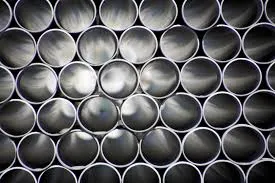
-
 Afrikaans
Afrikaans -
 Albanian
Albanian -
 Amharic
Amharic -
 Arabic
Arabic -
 Armenian
Armenian -
 Azerbaijani
Azerbaijani -
 Basque
Basque -
 Belarusian
Belarusian -
 Bengali
Bengali -
 Bosnian
Bosnian -
 Bulgarian
Bulgarian -
 Catalan
Catalan -
 Cebuano
Cebuano -
 China
China -
 China (Taiwan)
China (Taiwan) -
 Corsican
Corsican -
 Croatian
Croatian -
 Czech
Czech -
 Danish
Danish -
 Dutch
Dutch -
 English
English -
 Esperanto
Esperanto -
 Estonian
Estonian -
 Finnish
Finnish -
 French
French -
 Frisian
Frisian -
 Galician
Galician -
 Georgian
Georgian -
 German
German -
 Greek
Greek -
 Gujarati
Gujarati -
 Haitian Creole
Haitian Creole -
 hausa
hausa -
 hawaiian
hawaiian -
 Hebrew
Hebrew -
 Hindi
Hindi -
 Miao
Miao -
 Hungarian
Hungarian -
 Icelandic
Icelandic -
 igbo
igbo -
 Indonesian
Indonesian -
 irish
irish -
 Italian
Italian -
 Japanese
Japanese -
 Javanese
Javanese -
 Kannada
Kannada -
 kazakh
kazakh -
 Khmer
Khmer -
 Rwandese
Rwandese -
 Korean
Korean -
 Kurdish
Kurdish -
 Kyrgyz
Kyrgyz -
 Lao
Lao -
 Latin
Latin -
 Latvian
Latvian -
 Lithuanian
Lithuanian -
 Luxembourgish
Luxembourgish -
 Macedonian
Macedonian -
 Malgashi
Malgashi -
 Malay
Malay -
 Malayalam
Malayalam -
 Maltese
Maltese -
 Maori
Maori -
 Marathi
Marathi -
 Mongolian
Mongolian -
 Myanmar
Myanmar -
 Nepali
Nepali -
 Norwegian
Norwegian -
 Norwegian
Norwegian -
 Occitan
Occitan -
 Pashto
Pashto -
 Persian
Persian -
 Polish
Polish -
 Portuguese
Portuguese -
 Punjabi
Punjabi -
 Romanian
Romanian -
 Russian
Russian -
 Samoan
Samoan -
 Scottish Gaelic
Scottish Gaelic -
 Serbian
Serbian -
 Sesotho
Sesotho -
 Shona
Shona -
 Sindhi
Sindhi -
 Sinhala
Sinhala -
 Slovak
Slovak -
 Slovenian
Slovenian -
 Somali
Somali -
 Spanish
Spanish -
 Sundanese
Sundanese -
 Swahili
Swahili -
 Swedish
Swedish -
 Tagalog
Tagalog -
 Tajik
Tajik -
 Tamil
Tamil -
 Tatar
Tatar -
 Telugu
Telugu -
 Thai
Thai -
 Turkish
Turkish -
 Turkmen
Turkmen -
 Ukrainian
Ukrainian -
 Urdu
Urdu -
 Uighur
Uighur -
 Uzbek
Uzbek -
 Vietnamese
Vietnamese -
 Welsh
Welsh -
 Bantu
Bantu -
 Yiddish
Yiddish -
 Yoruba
Yoruba -
 Zulu
Zulu
Fiberglass Pipe Insulation Components for Efficient Thermal Management Solutions
Fiberglass Pipe Insulation Fittings An Essential Component for Energy Efficiency
In today’s energy-conscious world, effective insulation is paramount in maintaining temperature control and enhancing energy efficiency. Among various insulation materials available, fiberglass is widely recognized for its superior thermal performance. While fiberglass pipe insulation is commonly used for straight sections of piping, the importance of fiberglass pipe insulation fittings should not be overlooked. These fittings play a crucial role in ensuring the overall effectiveness of insulation systems.
Fiberglass pipe insulation fittings are designed to fit snugly around various types of pipe fittings, such as elbows, tees, valves, and flanges. This helps to eliminate thermal bridging—the transfer of heat through materials that are in direct contact. When heat escapes through uninsulated fittings, it can lead to significant energy losses, negating the benefits of insulating the straight sections of pipe. By using fiberglass insulation fittings, one can achieve a continuous insulation barrier that maintains the desired temperature and minimizes energy costs.
One of the key advantages of fiberglass insulation is its ability to withstand high temperatures, making it ideal for a wide range of applications, including HVAC systems, plumbing, and industrial processes. Fiberglass insulation typically has a thermal conductivity value of around 0.20 to 0.30 BTU·in/(hr·ft²·°F), ensuring excellent thermal resistance. Additionally, fiberglass materials are non-combustible, contributing to fire safety in buildings and infrastructure.
fiberglass pipe insulation fittings

Installation of fiberglass pipe insulation fittings is straightforward, which adds to their appeal. These fittings are available in various sizes and shapes to accommodate different pipe configurations. Most products are pre-formed to fit standard fittings, allowing for quick and easy installation without the need for additional cutting or fabrication. This not only saves time but also ensures a snug fit, maximizing the insulation’s thermal efficiency.
Furthermore, the use of fiberglass pipe insulation fittings contributes to sustainable building practices. By reducing energy consumption, buildings can lower their carbon footprint and comply with increasingly stringent energy codes and standards. Investing in quality insulation fittings is an important step for homeowners and businesses looking to promote sustainability and reduce energy costs.
In conclusion, fiberglass pipe insulation fittings are an essential component of an energy-efficient insulation system. They help prevent heat loss, enhance overall insulation performance, and contribute to sustainable building practices. For anyone involved in construction, renovation, or HVAC maintenance, paying attention to the insulation of fittings can lead to significant long-term benefits, both economically and environmentally. As energy efficiency continues to be a priority, the importance of quality insulation, including fittings, cannot be overstated.









